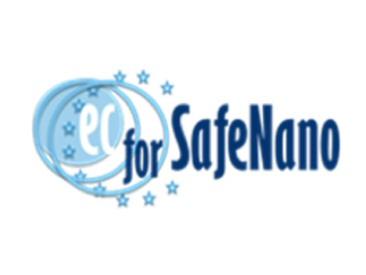The overall objective of the EC4SafeNano project is to develop a distributed Centre of European organisations for Risk Management and Safe Innovation for Nanomaterials & Nanotechnologies. This centre will be independent and science-based and will support industry, safety service providers, regulators and other public or private stakeholders.
Funding and duration
- H2020
- November 2016 – October 2019
Website
Operating principles
The EC4SafeNano project will define and validate appropriate operating principles, as well as the necessary governance strategy to develop a sustainable self-funding structure. The structure of the European Centre for Risk Management and Safe Innovation for Nanomaterials & Nanotechnologies will be a hub-based network of organizations operated by a core group of public-oriented bodies providing risk management and safe innovation support to all stakeholders. It will attract ‘Associate Partners’ to expand the capabilities, resources and services available, and it will interact with ‘mirror’ national hubs. The operational capabilities of the centre will be evaluated based on several case studies. These case studies will be defined during the project, and exemplify how the Centre for Risk Management and Safe Innovation for Nanomaterials & Nanotechnologies will operate on behalf of its members.
Documents, procedures & best practices
A secondary objective of the EC4SafeNano project is to produce and promote guidance documents on available tools, Standard Operational Procedures (SOPs), best practices, and an inventory of infrastructures etc. These actions will support market actors in implementing safe management of nanotechnology and enhance the overall capabilities and expertise in risk management and safe innovation for Nanomaterials and Nanotechnologies.
Operational objective
The operational objectives of the project are:
- To understand the needs of the various stakeholders (private and public) and achieve a mapping of needs, both current and likely in the near future on a 5 year-horizon;
- To identify the resources and capabilities available inside/outside the consortium to address the stakeholder needs. This inventory will include emerging / associated countries, with both a geographical and a domain mapping of all resources available;
- To provide solutions and build a range of services, based on selected resources, that answer stakeholder needs across the innovation value chain. Examples are: routine tests, hazards and risks assessment, training, support in standardization or certification, knowledge-sharing, access to communicative platforms and informatics tools;
- To develop mechanisms and operating procedures for periodically updating the “needs and resources” mapping and the services proposed, in order to always propose the best available practices and to meet the emerging needs expressed by the various stakeholders;
- To test and benchmark the services in order to check their relevance to address the needs but also in order to evaluate the governance of the structure proposing and delivering the services;
- To develop a sound exploitation plan and business plan, in order to prepare the self-sufficient operation of such a hub of expertise and services beyond the project lifetime.
